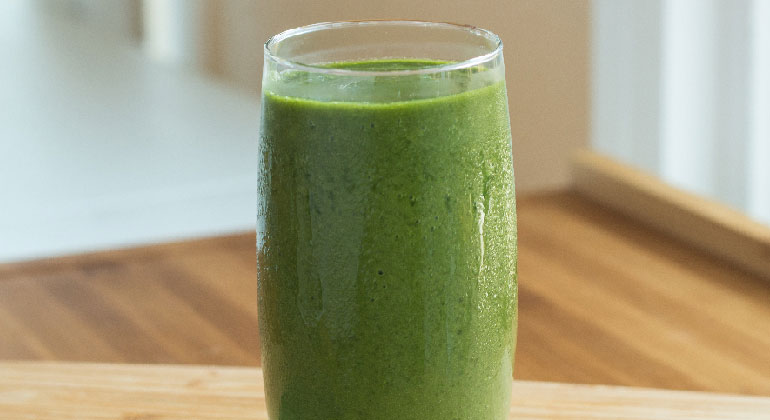
Interning at the UN this summer with a focus on Sustainable Development Goals (SDGs), I often feel like we’re talking about these great, sweeping ideas (“by 2030 end all forms of malnutrition”) with a much weaker means of actual implementation or measurement of these proposed bold targets. It can get pretty difficult going to work every day wondering if I am, or if anyone is, making a difference while nit-picking wording in an air-conditioned conference room with buttery leather chairs and a breathtaking view of the East River.

Negotiations wear on at the High Level Political Forum on Sustainable Development at UN Headquarters NY
That’s why I get so excited thinking about the potential for moringa to change the world on an international scale. In fact, I feel myself mentally inserting moringa as the tangible, on-the-ground solution to supplement the lofty, relatively nebulous statements put forth by the Outcome Document on the proposed Sustainable Development Goal 2: “End hunger, achieve food security and improved nutrition, and promote sustainable agriculture.”
Moringa leaf powder, made from the Moringa oleifera tree, can provide a person with half a day’s protein and potassium needs, three-fourths of the day’s iron needs, and the entire day’s calcium and vitamin A needs in just a few spoonfuls. Even better, moringa grows well in arid climates, the type typically found in developing countries most desperately struggling to combat malnutrition in the first place.
In fact, delving deeper into the individual targets of SDGs, moringa offers the potential to help the UN and UN member states to fulfill proposed Target 2 of Goal 2 almost completely:
- 2 by 2030 end all forms of malnutrition, including achieving by 2025 the internationally agreed targets on stunting and wasting in children under five years of age, and address the nutritional needs of adolescent girls, pregnant and lactating women, and older persons
It fits almost perfectly with the aims of sustainable development. Of course though, it seems I have reinvented the wheel-UN specialists have beat me to the punch synthesizing the humanitarian goals of the United Nations with the environmental, economic, and health benefits of moringa.
A slew of UN agencies such as the World Food Programme (WFP), the Food and Agriculture Organization of the United Nations (FAO), United Nations Educational, Scientific and Cultural Organization (UNESCO), and the United Nations Environment Programme (UNEP), and the United Nations Children’s Fund (UNICEF), have all paid tribute to moringa as a miracle tree with the potential to further the UN agenda for sustainable development. Andrew Young, a United Nations Ambassador, once commented on the underutilized potential for moringa to change the world when he said, “Moringa shows great promise as a tool to help overcome some of the most severe problems in the developing world—malnutrition, deforestation, impure water and poverty. The tree does best in the dry regions where these problems are worst.”
With such strong support for the moringa tree, how do we turn “great promise” into great practice?
According to an article published in the scholarly journal Ecology of Food and Nutrition, the diffusion of the cultural knowledge surrounding the benefits of moringa has allowed both United Nations agencies and member states to implement morigna-proliferation programs in developing countries.
These programs that use manufactured nutrient-rich powders, high-energy food sources, vitamin A drops, and nutrition centers for severely undernourished children have adequately addressed the once bleak world nutritional status… M. oleifera is one example of a nutrient source that can be grown and used at the individual or societal level. By partnering with appropriate educational modalities to describe its uses and nutritional benefits, communities around the world will be able to participate directly in halving the world’s hunger and improving nutritional deficiencies.
The article continues, stating that moringa gives “countries with a high prevalence of under-nutrition might have at their fingertips, a sustainable solution to some of their nutritional challenges.”
It seems at the international level, efforts to bring moringa to those in need are in full swing. The United Nations agencies and member states have wholeheartedly embraced the tree and are continuing to facilitate the diffusion of knowledge regarding the benefits of moringa.
But even after learning about all that is being done at the United Nations to combat malnutrition and sustainable agriculture through moringa, I still leave the office in my heels and blazer without a sense of accomplishment. It’s difficult to feel like I’m making a difference when international policy is so far removed from grassroots work at the local level.
So while negotiations continue, how can we as everyday citizens make a difference?
One great way is through the United Nations Environment Programme’s “Billion Tree Campaign,” which promotes the planting of trees throughout the world, including Moringa oleifera. There’s a helpful how-to guide on successful planting techniques to ensure a strong foundation and long life for your sapling, as well as a tree database to register your tree with the campaign.
In fact, during the United Nations sponsored ‘Year of Forests’ campaign in 2011, the tree-planting movement stretched around the world. In Ghana, the country’s capital city of Accra alone planted 20,000 moringa seedlings in the region.
So no matter where you work, there’s always the option of kicking off your dress shoes at the end of the day and trading them for sneakers, a moringa sapling, and some good old-fashioned dirt. How’s that for on-the-ground outreach?
_________________________________________________________________________________________
Sources:
[1] http://sustainabledevelopment.un.org/content/documents/4518SDGs_FINAL_Proposal%20of%20OWG_19%20July%20at%201320hrs.pdf
[2] http://www.wfp.org/photos/moringa-‘miracle-tree’
[3] http://www.ncbi.nlm.nih.gov/pmc/articles/PMC2679503/
[4] http://www.moringarevealed.com/research.html
[5] http://www.thp.org/blog/miracle_moringa_tree
[6] http://www.fao.org/docrep/009/a0467e/a0467e04.htm#P1093_215328
[7] http://www.ttiitn.com/M/miracletree.html
[8] http://www.plant-for-the-planet-billiontreecampaign.org
[9] http://www.unesco.org/most/bpik10-2.htm
[10] http://blog.moringasource.com/moringa-olefiera-the-next-superfood/
[11] http://www.fao.org/docrep/004/ac145e/AC145E09.htm
[12] http://allthingsmoringa.com/eBook.pdf









Wow! Moringa oleifera seems like a miracle tree of life and a sustainable solution to world’s hunger and diseases. You are absolutely right about ineffective lofty goals set in ivory towers often stifled in bureaucracy. I also believe you are making a difference at the individual level. You are making a positive impact one step at a time. BRAVO!
I live in the tropics of Africa.I have a strong feeling that the idea of moringa planting will create a sustainable Africa.at the same time assist in the achievement of sdgs.I frequently use moringa and I am a living testimony on its benefits.